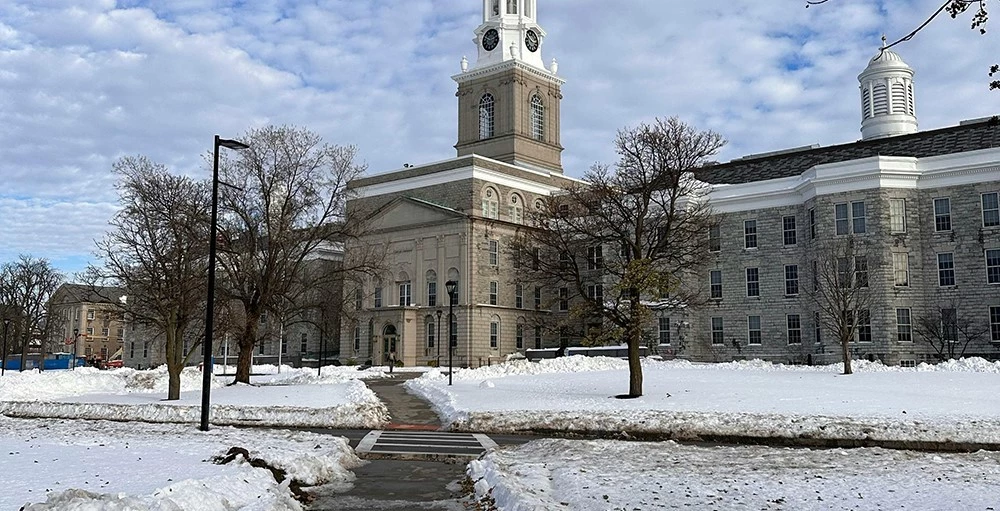Financial Aid Directors are responsible for executing all short, medium, and long-term planning for their college's financial aid program.
When determining which administrative programs to offer students, financial aid directors hope to find options that help increase access for prospective students or support a specific segment of students already enrolled.
Based on a survey from the Princeton Review1, a college financial wellness program can help 98% of students both before and after graduation.
The Numbers
The 2021 College Hopes and Worries Survey Report surveyed over 14,000 college applicants and their parents to find out about their main college concerns.
One of the questions was about the need for financial aid – loans, scholarships, and grants to pay for college education. Here’s what they had to say:
- 98% said some form of aid will be necessary to pay for college
- Over half (53%) said it would be extremely necessary
- 29% said it would be very necessary
Only 2% of students and 3% of parents said that financial aid was unnecessary.
Understanding financial aid (how it works, how to apply, when to apply) and how to determine if a student loan makes sense is very important to almost the entire student body.
Confusion About Student Loans
Studies show that students don’t truly understand their loan terms. For instance, College Ave Student Loans2 did a survey that found:
- 49% of student loan borrowers do not feel they will be able to repay their loan
- Only 37% understand the terms of their loan
- 69% do not know what their payment will be
Other studies have found that students don’t understand when interest will begin to accrue, how much they will pay in interest over the life of the loan, that they have to repay the loan even if they don’t have a job, and that the amount they owe each month is not based on their income.
They also don't know how to refinance a loan and if needed, the pros and cons of student loan deferment, how Public Service Loan Forgiveness works, and more.
How Financial Wellness Can Help
A student financial wellness program can help students understand student loans and alleviate the confusion – which has contributed to the current $1.61 trillion3 student loan crisis, and the 5.3 million loans in default despite the COVID-19 student loan relief offered by the government.
Things like student loan debt letters, and entrance and exit counseling, can make a huge difference when it's time for students to borrow or start paying back their loans.
A study by the Financial Industry Regulatory Authority (FINRA)4 found that financial education for college students was very effective.
They discovered that students who participated in financial education programs had the following results:
- Higher credit scores
- Lower student loan delinquencies and defaults
- Lower financial stress
- Improved academic performance
- Higher graduation rates
- Better overall financial management
Finding the Right Student Financial Wellness Program
Information, education, and tools are critical components to alleviate the student loan crisis.
When choosing a financial wellness program for students, institutions should look for holistic programs that provide a comprehensive array of materials to educate students and provide actionable steps to help them navigate financial aid.
Topics to consider include:
- Basics of different types of federal loans
- The advantages of federal student loans vs private loans
- When to consider private loans
- Strategies and methods for borrowing wisely
- Alternative sources of funding
- How interest works
- Repayment options
- How to apply for an income-driven repayment plan
- How to compare financial aid offers
- A way to access loan information
- Information on public service loan forgiveness
- Tips for avoiding delinquency and default
- Understanding deferment and forbearance
- Who to contact if you need help repaying the loan
- Student loan snapshot tool to help students see if they are on track for repayment
- Scholarship search tool
- Student loan affordability calculator
- Up-to-date information about loans, such as current government programs and policies
In addition to these topics, a strong student financial wellness program will also include modules on budgeting, getting out of debt, and using credit wisely.
Look for a multimedia program that can be accessed anytime across all standard devices and offers written, audio, and video content.
Contact us to get a demo of iGrad’s financial wellness program for students and learn the best practices to create, launch and promote a financial literacy program at your university.
1 - https://www.princetonreview.com/college-rankings/college-hopes-worries
2 - https://www.collegeavestudentloans.com/press/college-ave-student-loans-survey-finds-only-half-of-college-students-that-borrow-student-loans-feel-confident-they-can-repay/
3 - https://studentaid.gov/data-center/student/portfolio
4 - https://www.finra.org/media-center/news-releases/2015/finra-foundation-funded-study-documents-effectiveness-state-financial








